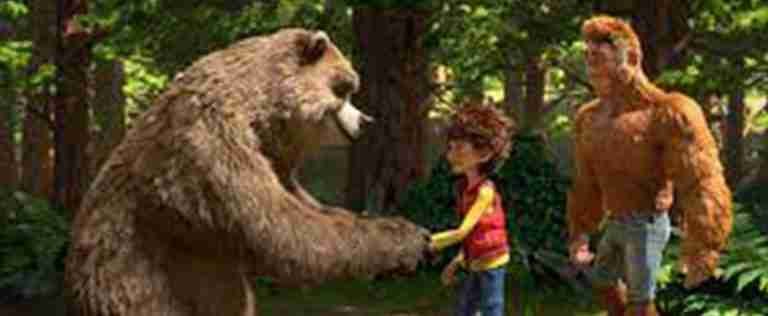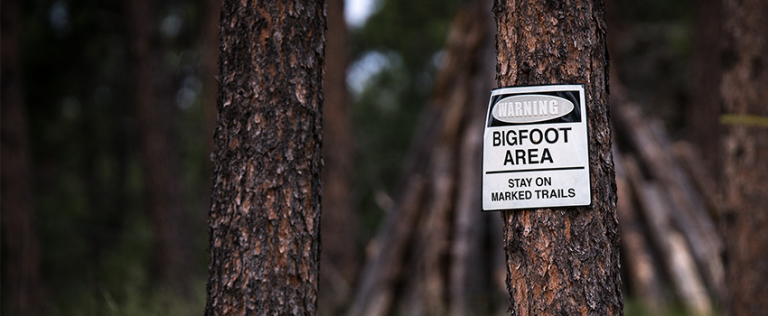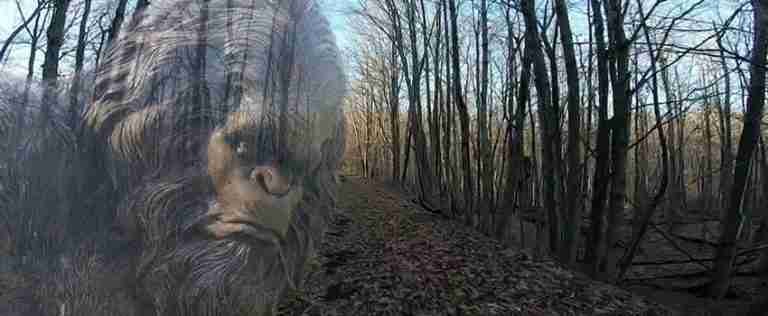A History of Bigfoot in Movies and TV Shows

Bigfoot, also known as Sasquatch, is a legendary creature that is believed to inhabit remote forests, mainly in the Pacific Northwest region of North America. The creature is typically described as being a large, ape-like creature with a strong and muscular build, standing upright on two legs and covered in fur. Despite the many reported sightings of Bigfoot over the years, there is no scientific evidence of the creature’s existence and it remains a subject of debate and speculation.
Despite the lack of concrete evidence, Bigfoot has remained a popular and enduring subject of fascination in popular culture. The creature has been featured in numerous movies, TV shows, and other forms of media, and has inspired a wide range of merchandise and other products. From early films like “The Legend of Boggy Creek” to more recent TV shows like “Finding Bigfoot,” Bigfoot has played a prominent role in popular culture for decades.
The purpose of this article is to explore the various ways in which Bigfoot has been depicted in movies and TV shows over the years. We will examine the early portrayals of Bigfoot in film and TV, as well as more modern depictions of the creature. We will also consider the impact that Bigfoot has had on popular culture and how its appearances in movies and TV shows have influenced public perception and interest in the creature.
Early Portrayals of Bigfoot in Film and TV
Bigfoot has been depicted in movies and TV shows for decades, with some of the earliest portrayals dating back to the 1960s and 1970s. One of the most well-known and influential early depictions of Bigfoot was the 1972 film “The Legend of Boggy Creek.” This film, which was based on real-life reports of Bigfoot sightings in the Arkansas bayou, was a low-budget production that became a surprise hit and spawned two sequels.
Other early portrayals of Bigfoot in film and TV included the 1977 TV movie “The Mysterious Monsters,” which featured a segment on Bigfoot, and the 1980 film “The Beast of Bray Road,” which focused on a series of reported Bigfoot sightings in Wisconsin. These early depictions of Bigfoot tended to portray the creature as a mysterious and elusive creature, often shown in glimpses or from a distance, and often depicted as being a potential threat to humans.
These early portrayals of Bigfoot in film and TV played a significant role in shaping popular perceptions of the creature. They helped to establish Bigfoot as a popular cultural icon and fueled public interest in the creature. These portrayals also contributed to the creation of various myths and legends surrounding Bigfoot, which continue to be a part of popular culture to this day.
Modern Portrayals of Bigfoot in Film and TV
More recent portrayals of Bigfoot in movies and TV shows have varied in their approach to the creature. Some modern depictions have continued to portray Bigfoot as a mysterious and elusive creature, while others have taken a more lighthearted or humorous approach.
One popular example of a modern portrayal of Bigfoot is the TV show “Finding Bigfoot,” which aired on Animal Planet from 2011 to 2017. The show followed a team of investigators as they traveled around the country searching for evidence of Bigfoot and documenting their findings. While the show was not a serious scientific exploration of the Bigfoot phenomenon, it did provide a platform for people to share their personal experiences and accounts of encounters with the creature.
Other modern portrayals of Bigfoot in film and TV include the 2012 film “Abominable,” which featured a comedic portrayal of a group of characters trying to capture a Bigfoot, and the 2014 film “Bigfoot: The Lost Coast Tapes,” which took a more serious approach to the story of a group of people who encounter a Bigfoot in the California wilderness.
In comparison to earlier portrayals of Bigfoot, modern depictions of the creature have generally been more diverse and have taken a wider range of approaches to the subject. While some modern depictions have continued to depict Bigfoot as a mysterious and potentially dangerous creature, others have adopted a more comedic or lighthearted tone. Overall, the evolution of Bigfoot portrayals in film and TV reflects the continued fascination with the creature and the enduring appeal of the Bigfoot myth.
The Impact of Bigfoot in Film and TV
Bigfoot has had a significant impact on popular culture through its appearances in movies and TV shows. The creature has become a popular cultural icon and has inspired a wide range of merchandise and other products.
Bigfoot’s appearances in movies and TV shows have helped to fuel public interest in the creature and have contributed to its enduring popularity. For example, the 1972 film “The Legend of Boggy Creek” was a surprise hit and spawned two sequels, while the TV show “Finding Bigfoot” was a ratings success and aired for several seasons. These and other Bigfoot-themed movies and TV shows have helped to keep the legend of Bigfoot alive and have helped to maintain public interest in the creature.
In addition to driving public interest, Bigfoot’s appearances in popular media have also had an impact on public perception of the creature. Early portrayals of Bigfoot in film and TV often depicted the creature as a mysterious and potentially dangerous creature, which may have contributed to the fear and mistrust that some people have of Bigfoot. More recent portrayals of Bigfoot have generally taken a more lighthearted or humorous approach, which has helped to shift public perception of the creature and has helped to make it more accessible and relatable.
Overall, Bigfoot’s appearances in popular culture have played a significant role in shaping public perception and interest in the creature. Despite the lack of concrete scientific evidence for its existence, Bigfoot continues to capture the imagination of people around the world and remains a popular subject of fascination.
Conclusion: A History of Bigfoot in Movies and TV Shows
In summary, the article has explored the various ways in which Bigfoot has been depicted in movies and TV shows over the years, including early portrayals of the creature in films like “The Legend of Boggy Creek” and more recent depictions in shows like “Finding Bigfoot.” The article has also discussed the impact that Bigfoot has had on popular culture through its appearances in film and TV, and how these appearances have influenced public perception and interest in the creature.
Despite the lack of scientific evidence for its existence, Bigfoot continues to be a popular and enduring subject of fascination in popular culture. The creature has inspired a wide range of movies, TV shows, and other media, as well as a vast array of merchandise and other products. The enduring appeal of Bigfoot in popular culture is likely due to a combination of factors, including the creature’s mysterious and elusive nature, the enduring appeal of myths and legends, and the enduring human fascination with the unknown.
Overall, the continued fascination with Bigfoot reflects the enduring human desire to explore and understand the world around us, and to seek out answers to mysterious and unexplained phenomena. Whether or not Bigfoot ultimately proves to be real, it remains an enduring and captivating subject in popular culture.






